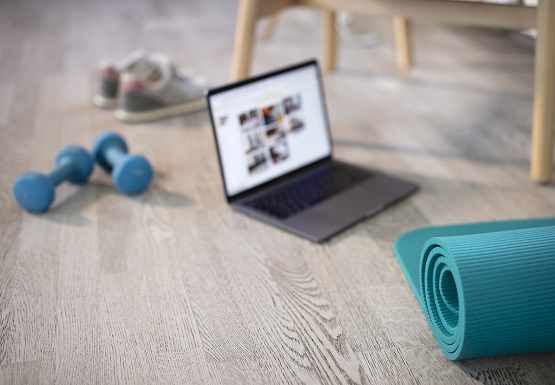The Anatomy of Back Pain

Back pain can affect everyone, regardless of age, occupation, gender and class. Dr Leslie Ng, Consultant Orthopaedic and Spine Surgeon at Island Orthopaedic Consultants, explains its causes and methods of treatment.
BACK TO BASICS
The back is part of a larger organ, the spine. The spine consists of 33 stacked bones called vertebrae, which are cushioned by soft discs. Another part of the back is the facet joint, which is the part that moves. A large and complex group of muscles supports the spine and allows the body to move, twist and bend. A complex network of nerves connects the spinal cord with specific regions of the body.
In other words, there’s a lot that can go wrong in a back. And it does, often. In fact, Dr Ng shares that four out of five of us can be expected to experience some form of back or neck pain during our lives.
BACK PAIN AFFECTS EVERYONE
Along with the rest of the developed world, the incidence of back pain is on the rise in Singapore.
“Back pain permeates all age groups, all social classes and many different occupations. In the younger age group, the most common cause of back pain is competitive sports. In the middle-aged group, it tends to be related to lifestyle and work environment, particularly in office-based workplaces and among industrial, manufacturing and manual workers. In the elderly group, it tends to be related to the inherent ageing of the spine,” shared Dr Ng.
According to Dr Ng, back pain also affects some pregnant women due to hormonal changes and weight gain. The changes in the hormonal balance lead to ligament laxity and therefore an increased risk of suffering from a slipped disc.
FIRST TO THE FAMILY DOCTOR…SOMETIMES TO A SPECIALIST
At his specialist clinic, Dr Ng only sees what he calls ‘the tip of the iceberg’ of back pain sufferers, since most cases can be managed by family doctors who are trained to recognise normal back pain and abnormal back pain.
“Normal back pain covers what we call primary mechanical back pain, which most of us would have experienced from time to time. This generally resolves within one to two weeks. Abnormal back pain covers pain that has been persistently present for more than two weeks, as well as pain that doesn’t change in character throughout the day, impedes sleeping at night, and doesn’t improve after bed rest,” explained Dr Ng.
Dr Ng points out that back pain is sometimes associated with a nerve problem. Symptoms of nerve-related back pain, also known as sciatica, include weakness of the arms and radiating pain that goes from the neck to the arms or down the legs. Further investigation by a specialist is required when this kind of pain is present, as it can be very disabling and unable to be managed through standard pain medication.
TREATING THE PERSON NOT JUST THE PAIN
When Dr Ng sees a patient referred to him by a family doctor, he first connects with the person. He makes it a point to acknowledge the patient’s pain, empathise with their complaints and then get down to ascertaining its source and causes. In Dr Ng’s case, the empathy is very real, as he himself has experienced recurring back pain after suffering from a slipped disc that required surgery when he was just 20 years old.
With some patients, there is a need for a magnetic resonance scan (MRI) to identify the location of the pain source within the spine. An X-ray alone is unable to capture the nerves and the discs, which show up as transparent.
According to Dr Ng, the majority of patients do not require surgery for back pain. More often than not, their pain can be resolved by modifying their lifestyles.
“I always tell the patient – I am treating you, I am not treating the X-ray or MRI image findings. As a practitioner, we need to focus on how to resolve patients’ pain through simple lifestyle measures such as changes in posture and diet,” said Dr Ng.
While back braces can relieve pain in the short term, Dr Ng warns against long-term reliance on such devices. “Long-term reliance on braces or any other orthosis may actually weaken the muscles. The patient should undertake correct physical activities, possibly guided by a therapist, for improved muscle strength and core muscle rehabilitation,” advised Dr Ng.
WHY BONES NEED VITAMIN D
At his clinic, Dr Ng has observed a disturbing number of cases of vitamin D deficiency across all age groups. Vitamin D facilitates the absorption of calcium from food into the gut and bloodstream, which in turn delivers it to the bones. It therefore has a direct impact on bone strength as well as muscle movement, tone and strength. A healthy body produces vitamin D when bare skin is exposed to sunlight.
“It is unclear why a lot of patients are lacking vitamin D, especially as some of them are actually exposed to a lot of outdoor activities. Some studies may have postulated that it is due to genetics or other factors that result in the liver and kidney not producing sufficient amounts of an active form of vitamin D. Of course, nutritional factors play a part, particularly in the elderly whose diets are often inadequate,” shared Dr Ng.
BONE SCREENING
Dr Ng underlines the importance of bone screening in the prevention of back pain. Since bones undergo changes as we age due to declining levels of sex hormones, loss of bone density is common among post-menopausal women and males after the age of 75. Due to the lack of these specific hormones, calcium leaks out from the bones, which causes them to weaken. Bone screening can check on a patient’s calcium and vitamin D levels. If necessary, supplements can be prescribed.
LOOK FORWARD, NOT BACK
We all know that there’s truth in the saying – prevention is better than cure. Keep fit, eat well, watch your posture and go for regular bone screenings if you’re in an at-risk age group. You may well be one of the lucky one in five who escapes back pain. If you’re not, take heart from the fact that the vast majority of cases can be managed without surgical intervention.
Article contributed by Dr Leslie Ng, an accredited doctor at Mount Alvernia Hospital.
This article is taken from our My Alvernia Magazine Issue #35. Click here to read the issue on our website or on Magzter.



